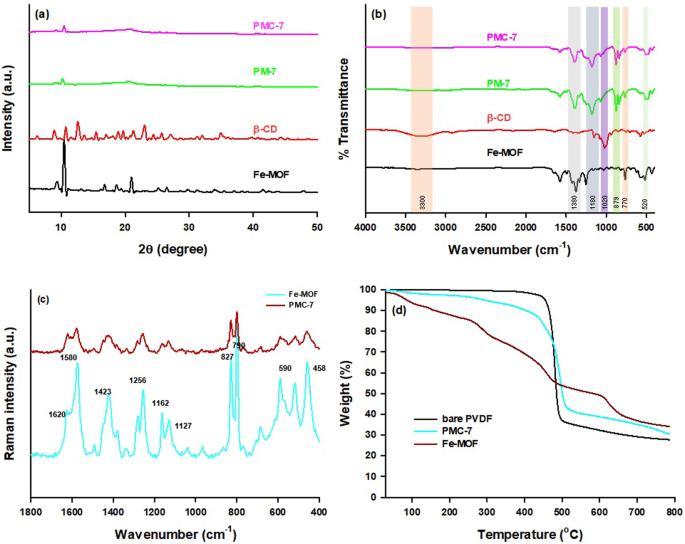Fabrication of porous beta-cyclodextrin functionalized PVDF/Fe–MOF mixed matrix membrane for enhanced ciprofloxacin removal
IF 10.4
1区 工程技术
Q1 ENGINEERING, CHEMICAL
引用次数: 0
Abstract
Herein, we demonstrate the synthesis of beta-cyclodextrin (β–CD) functionalized polyvinylidene fluoride (PVDF) and iron-based metal-organic framework (Fe–MOF) mixed matrix membrane (MMM) for the enhanced removal of ciprofloxacin (CIP) from water. The membranes were prepared using the phase inversion technique with PVDF as the polymer matrix, Fe–MOF as the filler, and polyvinylpyrrolidone (PVP) as the porogen. The optimized MMM with 7% wt. Fe–MOF exhibited excellent performance with 87.6% removal efficiency. Moreover, the maximum adsorption capacity was 6.43 mg g–1. The β–CD functionalization improved the MMM hydrophilicity exhibited by the water contact angle (WCA) analysis (WCA = 55°). Furthermore, excellent adsorption performance can be attributed to the large Fe–MOF specific surface area (682.5 m2 g–1), the high porosity (77%), and the average pore diameter (395 nm) of the membrane. The inclusion of PVP (1% wt.) enhanced the porous nature of the MMM and, consequently, the adsorption performance for CIP. Notably, the hydrophilic and macroporous membrane showed good reusability with over 70% removal efficiency after five sequential adsorption–desorption cycles. The insights from this study suggest that the PMC–7 membrane can be an excellent candidate for the remediation of organic contaminants from aquatic environments.

制备多孔 beta-环糊精功能化 PVDF/Fe-MOF 混合基质膜以提高环丙沙星去除率
在本文中,我们展示了β-环糊精(β-CD)功能化聚偏氟乙烯(PVDF)和铁基金属有机框架(Fe-MOF)混合基质膜(MMM)的合成,用于增强对水中环丙沙星(CIP)的去除。膜的制备采用相反转技术,以 PVDF 为聚合物基体,Fe-MOF 为填料,聚乙烯吡咯烷酮(PVP)为成孔剂。含有 7% wt.Fe-MOF 的优化 MMM 性能优异,去除率达 87.6%。此外,最大吸附容量为 6.43 mg g-1。通过水接触角(WCA)分析(WCA = 55°),β-CD 功能化改善了 MMM 的亲水性。此外,出色的吸附性能还归功于膜的大 Fe-MOF 比表面积(682.5 m2 g-1)、高孔隙率(77%)和平均孔径(395 nm)。加入 PVP(1% wt.)增强了 MMM 的多孔性,从而提高了 CIP 的吸附性能。值得注意的是,亲水性大孔膜显示出良好的重复利用率,经过五个连续的吸附-解吸循环后,去除效率超过 70%。这项研究表明,PMC-7 膜是修复水生环境中有机污染物的最佳候选材料。
本文章由计算机程序翻译,如有差异,请以英文原文为准。
求助全文
约1分钟内获得全文
求助全文
来源期刊

npj Clean Water
Environmental Science-Water Science and Technology
CiteScore
15.30
自引率
2.60%
发文量
61
审稿时长
5 weeks
期刊介绍:
npj Clean Water publishes high-quality papers that report cutting-edge science, technology, applications, policies, and societal issues contributing to a more sustainable supply of clean water. The journal's publications may also support and accelerate the achievement of Sustainable Development Goal 6, which focuses on clean water and sanitation.
 求助内容:
求助内容: 应助结果提醒方式:
应助结果提醒方式:


